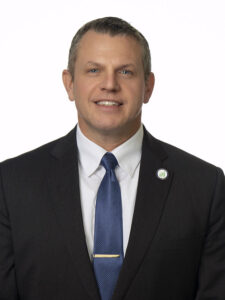
Jason E. Glass
Last month I met with the Kentucky Legislature’s Interim Joint Committee on Education to talk about the teacher workforce. The legislators and I talked about a lot about ways we might be able to encourage more people to go into teaching and how to keep our current teachers in their classrooms.
Kentucky, like all states, is facing some significant challenges when it comes to ensuring all students are taught by highly qualified educators. Since the 2015-2016 school year, on average, 16.5% of all the education positions posted on the Kentucky Employment Placement System go unfilled. Our number of emergency teaching certificates have been on the rise, which shows that our schools and districts are struggling to find enough properly certified educators to fill positions.
One of the statistics I find most alarming is that of our current teacher workforce, 72% of them are at risk of leaving their jobs soon. They fall into one of three main categories of people who are most likely to leave their jobs: educators with less than five years of experience, educators with 25 years or more of experience and educators who already have left teaching once but returned.
We’ve heard and seen from survey data that more teachers are considering leaving the profession, possibly from the pressures and environment created around education by COVID and political issues. While it’s too soon to see if that really will happen, we should take note that we have large numbers of teachers who could make the jump and leave the profession.
While every business, nonprofit and governmental agency is having a hard time finding enough employees these days, I just want to stress why we all should be concerned about the teacher pipeline and be working together to strengthen it.
Teachers are the linchpin in our educational system. While policymakers and our experts at the Kentucky Department of Education can talk about instruction, it is the tens of thousands of teachers who walk into their classrooms every day who actually deliver that instruction. They give of themselves every day, every week, every month and every year to help each student in their classrooms gain the skills they will need to pursue their dreams.
Our teachers don’t just help Kentucky’s children learn about math or social studies either. They provide social-emotional support to our children when they struggle. They often are one of the first people to notice when a child may be having trouble at home and can help link our students to the supports they need to get through that situation.
And, if we’re honest with ourselves, how many of us found our professions in life with the help of a teacher? I have heard so many stories – including my own – where teachers helped their students discover the passion in their lives that became their lifelong career.
Solving our teacher pipeline problem isn’t just a one-and-done solution. There are many things we can do – and will need to keep doing – to help reinvigorate the idea of teaching as being a viable and rewarding career option.
In the short term, we can expand our programs that already are helping students explore teaching as a possible future career though our Teaching and Learning Career Pathway and the Educators Rising career and technical student organization. Both programs give students the opportunity to develop teaching skills and experience what an educator’s life is like, as well as provide support for our future teacher workforce.
We can invest more into GoTeachKY – an existing initiative that seeks to recruit the next generation of teachers – including a comprehensive marketing campaign. We can increase funding for National Board Certification to help teachers with the cost of attaining their certification and we also can consider funding a professional development wallet for each teacher to empower them to choose professional learning that is relevant and meaningful.
In the long term, we can start addressing the fiscal reasons why our potential future teachers don’t go into the profession or why our current teachers leave earlier than they first hoped. First, we can provide a professional and livable wage for our current educators. Teachers go into this field for altruistic reasons – they want to serve their communities, work with young people and be connected to the future. But they also want a professional and livable wage, to have access to a middle class life and to retire with dignity.
We need to attract people into the teaching profession who are willing to devote the years of their lives that it takes to master the art and science of teaching. This is not a job everyone can or should do, and it deserves to be celebrated and recognized.
We can reduce the burden on education students with state-paid student teaching. Teaching candidates are not compensated for their student teaching and are not allowed to have a separate paid position at the same time. We also can expand grant opportunities for schools to establish teacher recruitment programs and we can support the development of recruitment and retention plans for districts.
Kentucky is known nationally to be an innovator, to take bold steps into the future of education. Now is the time for us to do it again. Our workforce, our communities, our schools and our students cannot thrive if we cannot, as a state, recruit and retain a high-quality teacher workforce.
Let’s work together to help make Kentucky one of the best states to work in as an educator.



Leave A Comment